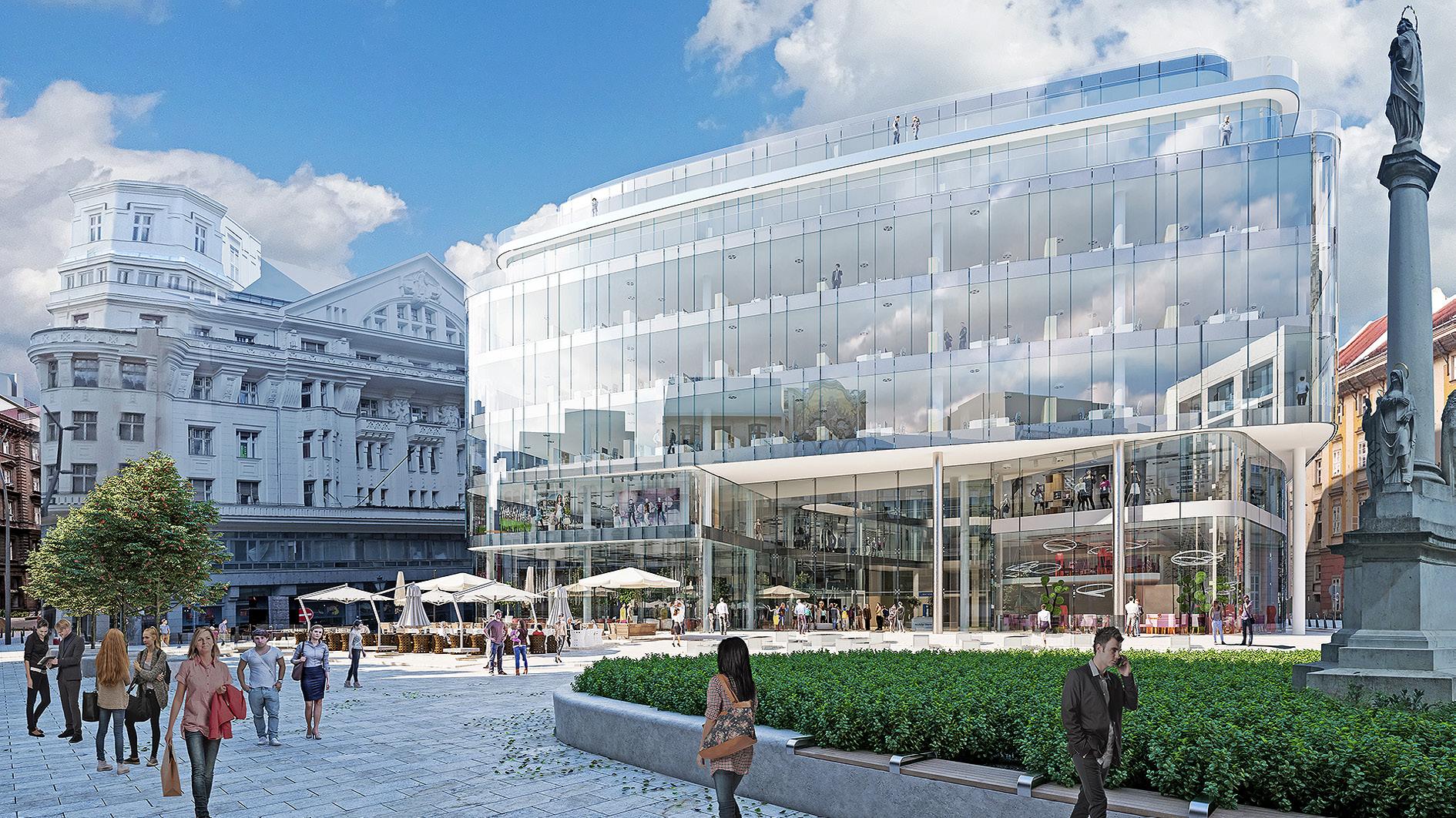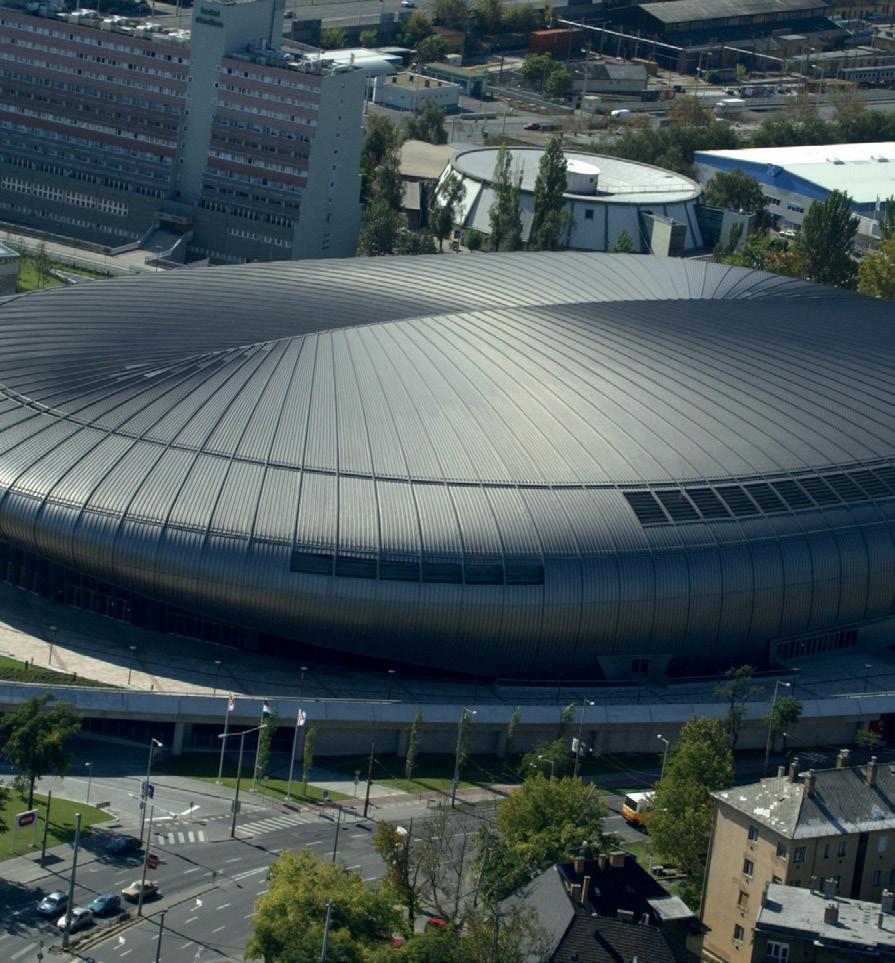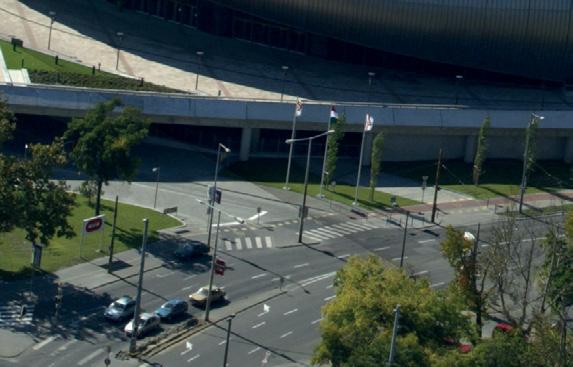
11 minute read
Developments Must be Integrated Into the City
DEVELOPMENTS MUST BE INTEGRATED INTO THE CITY Developers and architects are increasingly incorporating urban development elements into the design of commercial projects, which also need to be developed and managed according to the needs of the market in order for stake holders to make a return on their investments.
By Gary J. Morrell
The development process brings in environmental issues across different private and public market sectors relating to the look and feel of the city, its architecture, public and private transportation, access to amenities and proximity to residential areas. Sustainability accreditation organizations take these issues into account when making assessments.
From a positive perspective, office developments are now being undertaken in urban locations that are more integrated into the wider city. The conventional wisdom is that staff who often work flexible hours prefer to be located in areas where they can utilize amenities and commute by public transportation or bike. The evidence from the vacancy rates is that office staff have a clear preference for offices within the city. With the scarcity of labor and rising costs, office workplace accommodation is seen as a major element in the recruitment and retention of staff.
Thus, a central requirement for a successful Budapest office project today is a development site with direct access to metro, train, bus and tram stations. This is also a requirement of third-party sustainability accreditation organizations. Further, new developments now include bicycle parking, changing facilities and electric car charging possibilities.
Certification body LEED in its assessment criteria marks projects on the basis of density and connectivity,
The Ferenc Puskás Stadium (formerly the Népstadion or People’s Stadium) before it was demolished in 2016 to make way for the Puskás Aréna, currently still under construction. Commercial developers have complained that the large scale state project has sucked resources, especially labor, away from the rest of the market.
brownfield redevelopment, alternative transportation (public transport access, bicycle storage and changing facilities), protection and restoration of habitat and maximum open space provision.
Rival organization BREEAM has the stated aim of enhancing the social value of a project in a given area while mitigating its environmental impact. According to it, transportation accreditation points encourage better access to sustainable means of transportation for building users. There is thus a focus on the access of public transport and other alternative transportation solutions that help reduce car journeys and therefore lower congestion and CO2 emissions over the life of a building.
“Public and alternative transportation must be further improved in order to increase the air quality of the city. Budapest already has a very good public transport network, however, individual motorized transport [cars] is also continuously growing,” says Zsombor Barta, president of the Hungarian Green Building Council (HuGBC).
“Therefore, public transportation must be prioritized, the attractiveness of this transportation must be increased further and alternative transportation must be further developed, as we still do not have a good enough quality bicycle lane network and efficient electric car charging points. Further, the city authority should put more efforts into improving air quality,

which begins with a tidy and clean public road network; dusty and dirty roads in Budapest are not improving the air quality,” Barta adds.
TENANT PRIORITIES Tenant priorities have not changed a lot over the last few years; main priorities still include the location and rental fees, in the view of Barta.
“However, the workforce and workforce retention for a longer period has become a more and more important issue in our region. The provision of a healthy and esthetically appealing working atmosphere has also become an important factor. Further, the efficiency of the leased spaces (regarding productivity but also consumption) is also something that is now on the ‘wish-list’ of tenants,” he says.
“It is highly important to evaluate the project also on the community level and not just as a stand-alone project. Sustainable buildings are smart buildings as well and they respond to the needs of the building’s users, but they also interconnect. Sustainability
should make a city more livable; therefore, in an ideal case, it should have a huge effect also on the city’s appearance as well,” he says.
Agora Hub and Agora Tower, the first speculative phase of the Agora Budapest development, which is aiming at BREEAM “Outstanding” and WELL “Gold” accreditation, will deliver 65,000 sqm of office, retail and service space by 2020.
Jan Hübner, country CEO at HB Reavis Hungary, describes the architectural concept by Make Architects, with studios in London, Hong Kong and Sydney, and Hungary’s own Finta and Partners Architect Studio as having a reciprocal benefit to the developer, companies that locate to the project and the surrounding population.
“Urban spaces must be livable and therefore their transformation should also go in this direction. The most important ‘part’ of a city are the inhabitants, the people, or citizens. Their health and wellbeing is the most important criteria. City planning has
often forgotten about this priority in the past, and prioritized, for example, individual traffic or infrastructure. Cities must be transformed to livable urban spaces, where the wealth and health of the inhabitants is the highest priority,” explains Barta.
As developers are looking to go ahead with office developments to meet strong demand, there is increasing competition for suitablysized development sites that provide visibility and meet the requirements of tenants and staff regarding access to amenities and public and road transportation links.
Horizon Development is developing the 15,500 sqm Szervita Square office, retail and residential complex. The project is a rare new-built development in central District V, where it is becoming increasingly difficult to source development sites.
The LEED “Platinum” certified development will consist of retail space on three floors, office space on four levels and luxury residential

units on the fifth and sixth floors. The seven modern levels are designed to fit organically into the historic setting of Hungarian Art Nouveau buildings in this heritage protected area of the city. A park in front of the building is designed to add a public space in the area.
COMPETITION GROWING “With our focus on developing and restoring premium downtown properties in the Central Business District of Budapest, we always seek new opportunities with these parameters. As the number of available plots is becoming scarce in this prime area, competition to source new sites is naturally growing,” comments Attila Kovács, managing partner of Horizon Development.
There are a lot of positive examples in the Central European region for keeping the historic values of a city by enabling the development as well according to HuGBC’s Barta.
“We do not have to travel far, as Vienna is a good example for that. Part of sustainability is definitely the maintenance and management of historic values, and part of this is also the historical built environment. Landmark buildings might be an important factor, especially for tourism; however, I do not think that it is a must have, especially in our CEE region. On the other hand, buildings, which are designed also as an ‘art object’, with a very high quality of designed space, can fast become a landmark building as well. I am prioritizing high quality design and therefore for me this is more important than a design which tries to set a new landmark building,” he adds.
With the very limited possibilities for new-build development in the historic center, new development areas are emerging in out-of-center districts at key transportation hubs. Wing has completed the 58,000 sqm Magyar Telekom Group headquarters,
located in District IX, adjacent to the Groupama Ferencváros Stadium. A daily average of around 1,000 builders and 150 subcontractors worked to complete the built-to-suit project over the course of 28 months.
Wing has the opportunity to develop a further project on an adjacent site in the area, which is now developing into a business district with its excellent road, metro, and tram links. Such well located, large sites are becoming increasingly difficult to source in the booming Budapest office market.
Futureal is developing the 68,000 sqm Budapest ONE Business Park located at another transport hub at Etele tér, adjacent to the Kelenföld Railway Station and the Metro 4 stop. Budapest ONE will form part of the Kelenföld urban redevelopment project that will also include the 53,000 sqm Etele Plaza shopping mall. Futureal aims to create a business, service and leisure hub on the 22-hectare site, where an estimated 165,000 daily passengers pass through, according to the company.
“Based on the success of our flagships project, the Corvin Promenade, we see an enormous market demand for locations with direct access to key transportation hubs. Due to the country’s largest multimodal intersection located next to Budapest ONE Business Park, the city center can be reached via direct links in under ten minutes,” says Tibor Tatár, CEO of Futureal.
In this market with high demand and the resulting rising prices, developers need to weigh up the balance between the suitability of plots and the price of land.
“It is vital for us to have our office buildings on main public transport lines and to ensure the best accessibility for our tenants. Usable and well located development sites have become more valuable and, of course, more expensive. On the other hand, there are some new, upcoming office regions in the pipeline,” says Géza Barabás, country manager at S Immo Hungary.
NEW CITY QUARTER Another mixed-use project is BudaPart, the developer of which, Property Mark, describes as a “new city quarter” on a 54 hectare site on the southern Buda bank of the Danube at Kopaszi Gát (Kopasz Dam). The project will include office, retail and residential elements, in addition to large green and park areas. The complex will include the 120 meter high, 83,000 sqm MOL Tower, designed by the London-based Foster & Partners and the Hungarian Finta Studio. Debate has continued over the issue of height restrictions on buildings in Budapest, and this will certainly be unusually high.
The construction industry is regarded as going through a major boom, as Ferenc Furulyás, managing director of commercial property and investment management firm JLL Hungary, explains.
“Demand relative to construction work is much higher than the available supply. This is explained by the large amount of governmental developments, and the missing professional workers who either moved out of Hungary in the hope of higher salaries, or quit their profession and moved on to other sectors,” he says.
“Nowadays, developers compete with each other to work with the best contractors, whereas a few years ago we saw a price war between contractors to win work. Construction costing and budgeting has become challenging and developers take on increased risks on cost exposures and unforeseen events that may detrimentally affect their business plans. The importance of spending quality time on project preparation
Magyar Telekom HQ By Wing.

and allocating a realistic budget contingencies has never been so high,” Furulyás warns.
The construction industry has become the second largest contributor to GDP in Hungary following two years of double-digit expansion. However, one of the major challenges facing developers is the rising cost of construction. The annual cost inflation for office and industrial construction has reached 18% according to consultancy CBRE.
“The Hungarian construction market is experiencing a critical shortage of available labor. An estimated 40,000 skilled workers are missing from the sector, out of which circa 25,000 are working abroad. This shortage has been driving up labor costs, yet so far the wage increase has failed to attract back skilled labor from Western Europe, where construction is also fueled by the increased pipelines across major European economies,” comments Barna Harangi, head of project management and consultancy at CBRE. One possible solution to the labor shortage is the improvement of technical training and education and the encouragement and promotion of the construction industry as a career choice.
Many developers see the construction of the new 68,000 seater Ferenc Puskás national football stadium by a consortium of the constructors ZÁÉV and Építő as contributing to the labor force shortage in Hungary. Significantly, a number of large-scale sport and infrastructure projects are planned in Budapest.
The aim is to make Budapest “one of the most livable cities in Europe” Gábor Bagdy, deputy mayor of Budapest said at MIPIM 2019. The Municipality of Budapest, the Hungarian Investment Promotion Agency and the Association of Property Developers’ Round Table were present with a joint stand, Budapest-Hungary Time To Invest, where leading developers such as Atenor, GTC, HB Reavis, Horizon Development and Wing all presented projects due to be handed over in 2020.
EXCELLENCE AND LEADERSHIP IN HUNGARIAN REAL ESTATE

Real Estate Development and Investment Real Estate Services
The Property Manager







Experience Professionalism












